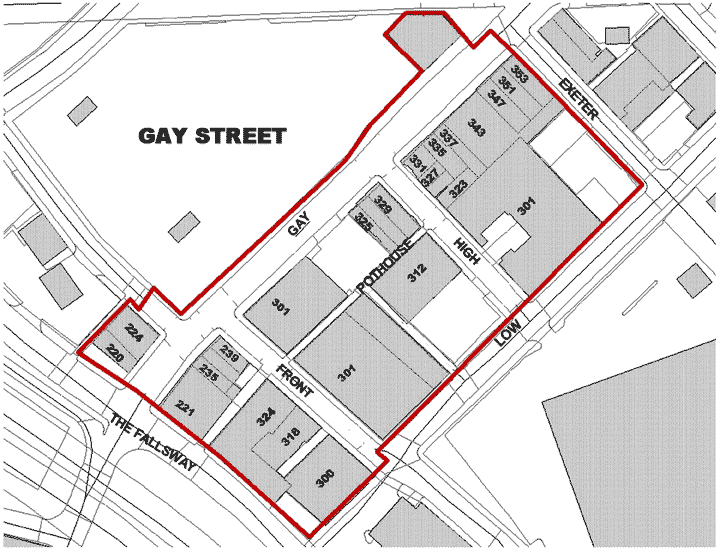Gay Street
National Register of Historic Places: 11/12/2003
Description
 The Gay Street Historic District, located to the east of the main downtown business district of Baltimore City, is a notable example of a late 19th and early 20th century commercial corridor in a developing urban area. The historic district is best understood within a variety of contexts including the commercial development of the area, early commercial architecture building types, and the development of cast-iron architecture.
The Gay Street Historic District, located to the east of the main downtown business district of Baltimore City, is a notable example of a late 19th and early 20th century commercial corridor in a developing urban area. The historic district is best understood within a variety of contexts including the commercial development of the area, early commercial architecture building types, and the development of cast-iron architecture.
Within Baltimore City, The District appears to be unique in its high concentration of small-scale commercial buildings. With only a single exception, the contributing buildings within the proposed district are either commercial in nature or directly support commercial or light manufacturing enterprises.
From its inception, the District was geographically segregated from the main downtown area of Baltimore by the location of the Jones Falls (and later the Jones Falls Expressway) to its west. Originally part of a larger rural and agrarian enclave know as Old Town, the area was annexed into the city boundaries in 1792. However, the District did not take on its present appearance until the mid 19th century, when small commercial enterprises and light manufacturing enterprises were established. The post-Civil War years were ones of particular growth in the area, with banks and insurance companies making their headquarters on Gay Street. The architecture exemplifies this period in American history and contains buildings displaying Victorian Eclectic, beaux-arts, Italianate, and Romanesque elements. Also in the years following the Civil War, two full fronts, cast iron buildings were constructed within blocks of each other on Gay Street. In addition to the cast iron buildings, the collection of commercial buildings in the Gay Street historic District display a broad range of architectural styles and commercial building types.
Although the street level facades of most of the buildings have been altered since their construction, they collectively continue to convey the commercial history of the Gay Street area. The buildings found within the Gay Street Historic District are most entirely commercial, with some related and public buildings, the buildings found within the Gay Street Historic are most entirely commercial, with some related light manufacturing buildings most notably small warehouses and garages found on the side streets of the district.
Significance
The Gay Street Historic District meets National Register Criterion C. Under Criterion C, the District conveys the commercial history of an area that is discrete from the main downtown area of Baltimore. With buildings that are smaller in scale than many of the downtown buildings of the same era, the Gay Street corridor displays more of a neighborhood commercial appeal rather than the large department stores and early skyscrapers in the downtown.
Furthermore, because the Gay Street corridor escaped Baltimore's Great Fire in 1904, the evolution of the commercial era is unchanged by natural disaster, unlike areas of downtown that were rebuilt en masse after the conflagration. The architectural elements of the District qualify as a significant and distinguishable entity whose components lack individual distinction. The majority of the commercial buildings that comprise the District convey the area's history as a local commercial corridor distinct from the greater development of downtown Baltimore to the west. The key buildings are excellent examples of the late 19th and early 20th century commercial architecture and epitomize widespread commercial building types of that period in American Architecture.
The District appears to be unique in its high concentration of small-scale commercial buildings. Other districts with similar commercial buildings also include significant numbers of residential, sacred, and/or public buildings. With only a single exception, the contributing buildings within the proposed district are either commercial in nature or directly support commercial or light manufacturing enterprises.
The District retains its integrity of location, design, setting, feeling, and association primarily because it retains it significant collection of commercial buildings with few intrusions. The degree of integrity of materials and workmanship is also high despite the alteration of street level facades. The period of significance for the District begins in 1850 when the first extant commercial buildings within the district boundaries were constructed and extends to 1934 when the Orleans Street Viaduct was constructed, cutting the area off from the remaining portion of Old Town and signaling an economic and social decline in once vibrant commercial corridor.